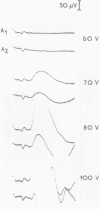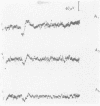Abstract
The nature and the origin of the small pre-potential wave which can be recorded immediately before the main muscle action potential on indirect stimulation was studied in the median nerve of 12 normal subjects. It is considered to be a sensory antidromic response recorded from the large afferent fibres which innervate the thumb because it was recorded in all 12 subjects, and the threshold was always below the motor threshold. An antidromic response was recorded with stimulating electrodes at the thumb and recording electrodes at the palm. Both antidromic and orthodromic responses were recorded with stimulating electrodes at the palm. The amplitude of the pre-potential was higher at the recording point closest to the sensory fibres for the thumb and progressively decreased with distance in the other points.
Full text
PDF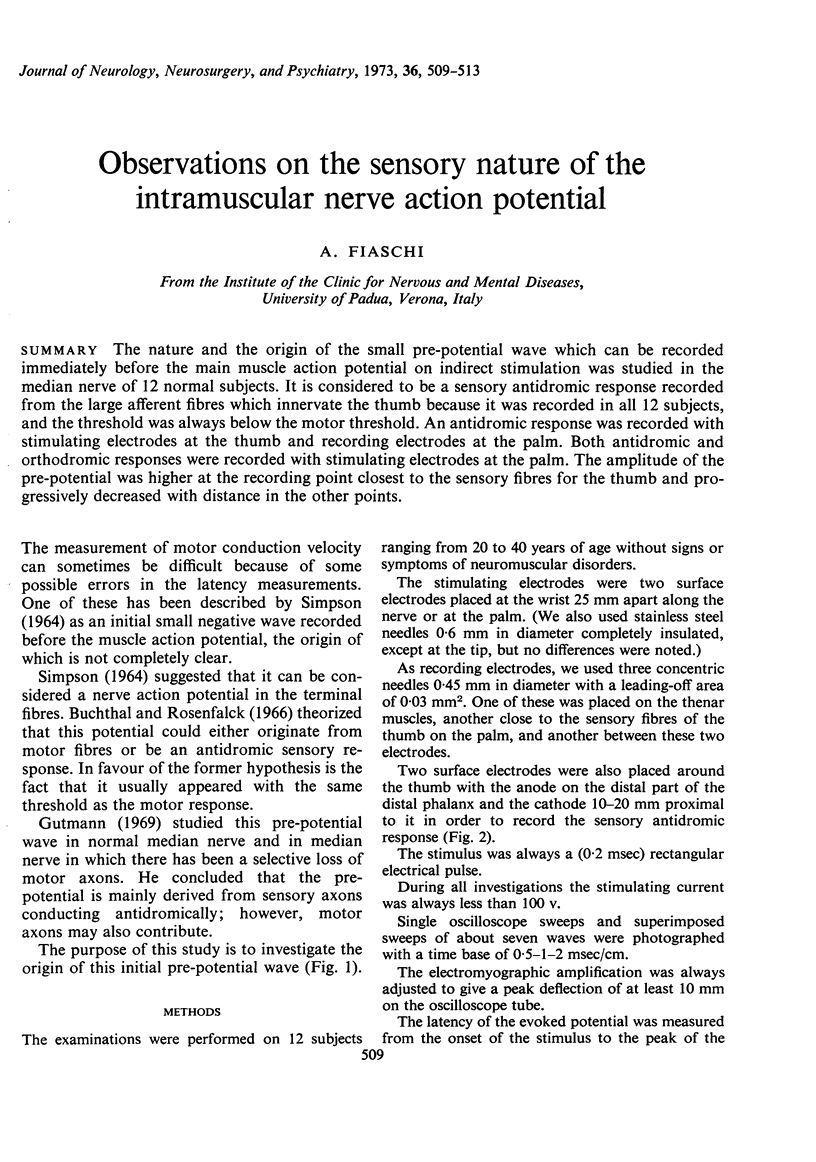
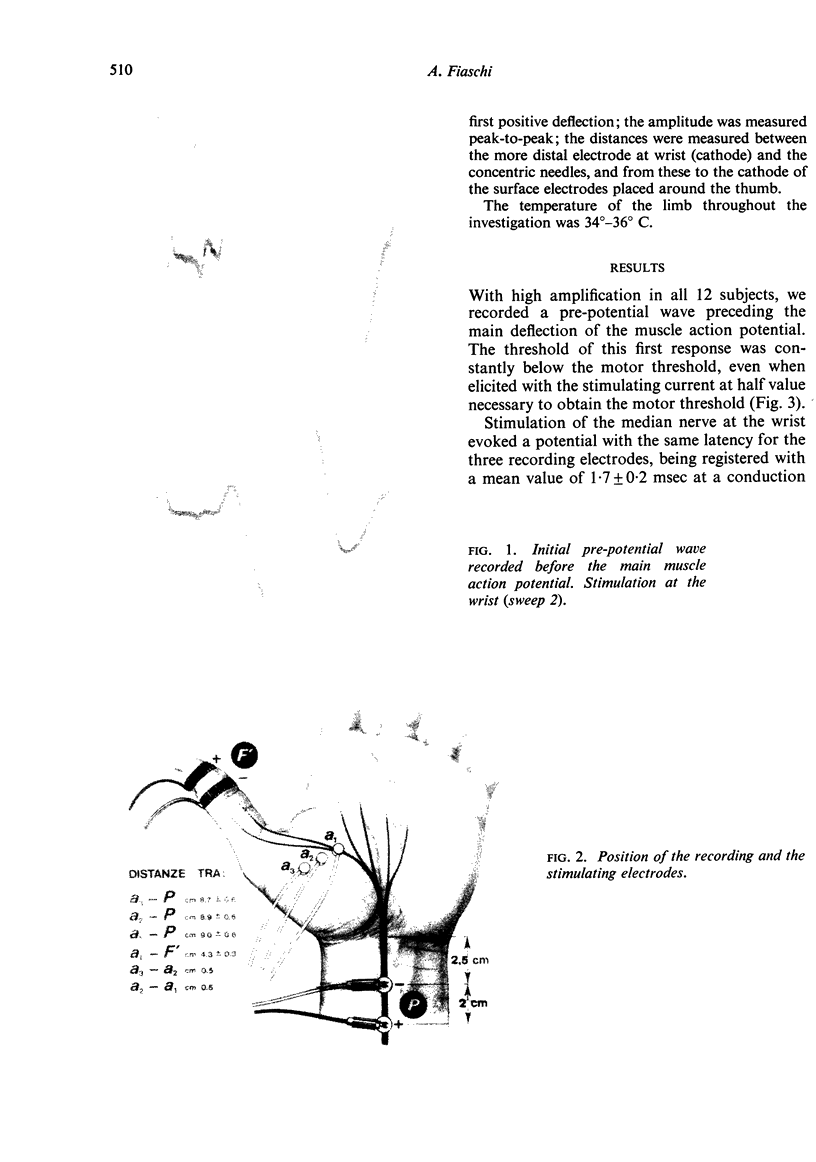
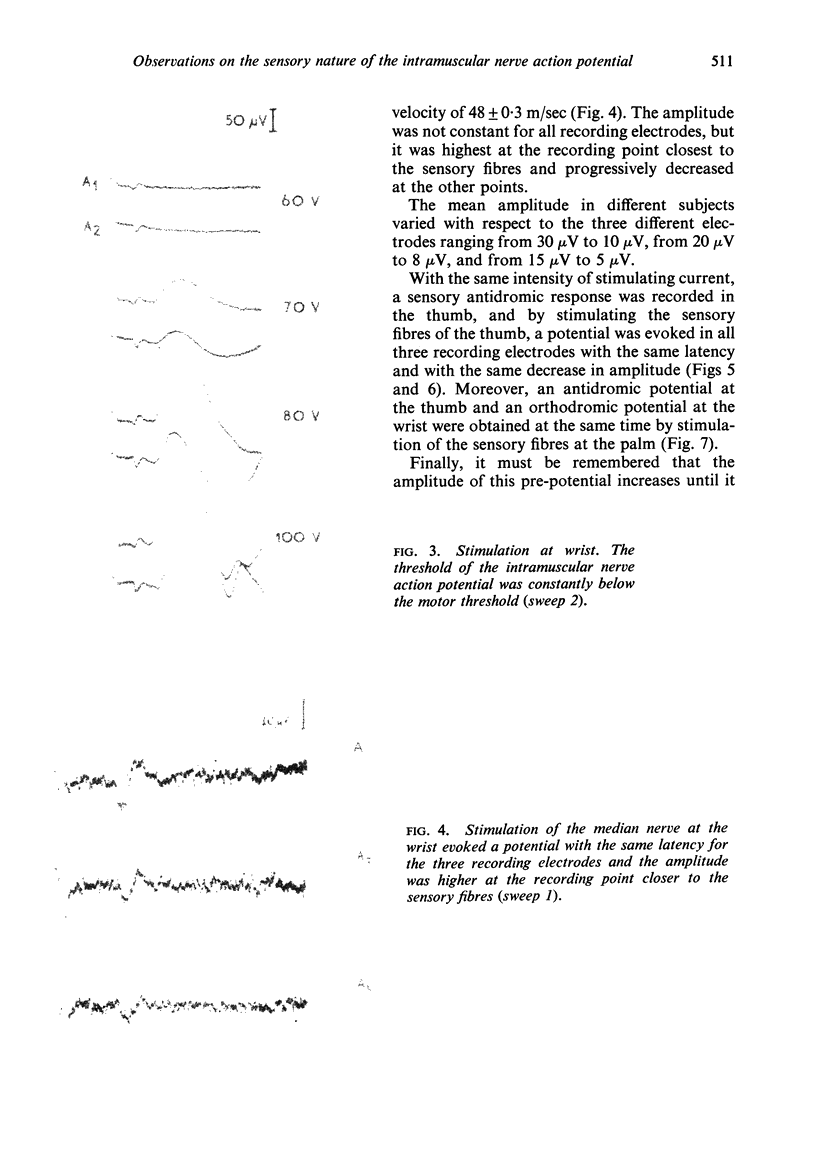
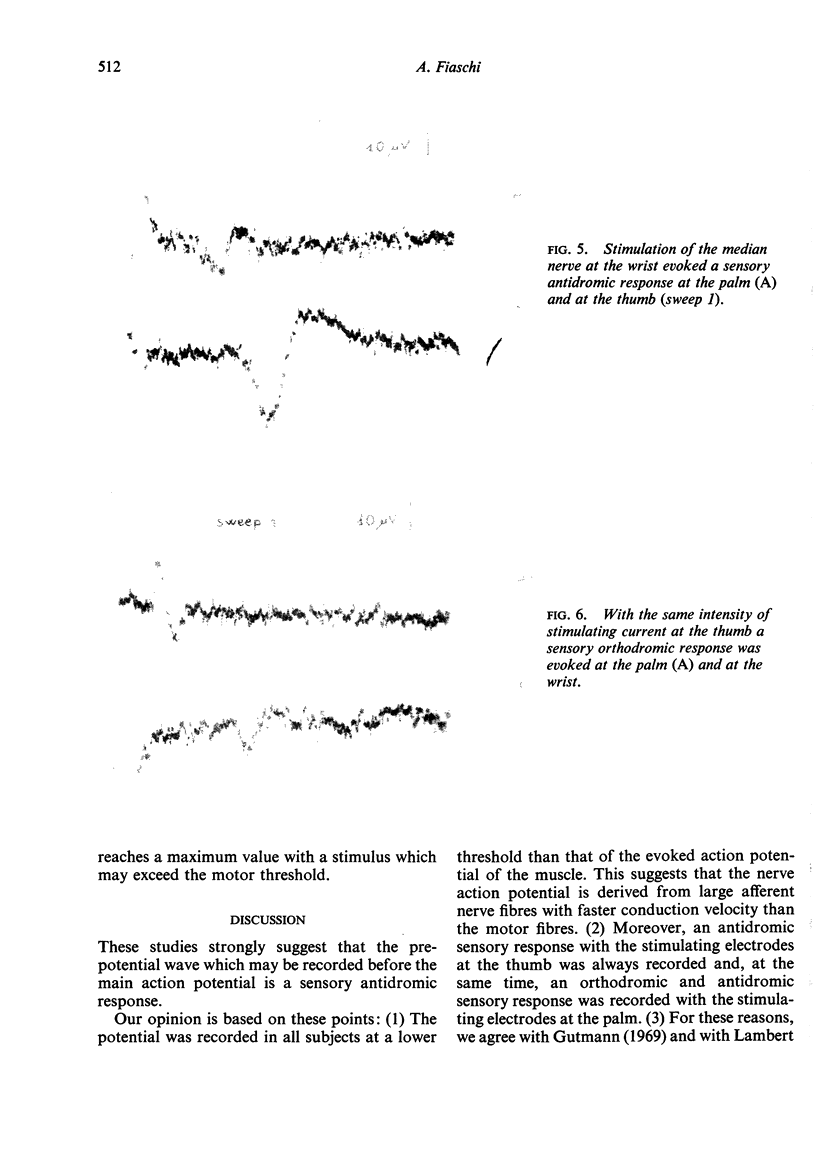

Images in this article
Selected References
These references are in PubMed. This may not be the complete list of references from this article.
- Dyck P. J., Lambert E. H. Lower motor and primary sensory neuron diseases with peroneal muscular atrophy. II. Neurologic, genetic, and electrophysiologic findings in various neuronal degenerations. Arch Neurol. 1968 Jun;18(6):619–625. doi: 10.1001/archneur.1968.00470360041003. [DOI] [PubMed] [Google Scholar]
- SIMPSON J. A. FACT AND FALLACY IN MEASUREMENT OF CONDUCTION VELOCITY IN MOTOR NERVES. J Neurol Neurosurg Psychiatry. 1964 Oct;27:381–385. doi: 10.1136/jnnp.27.5.381. [DOI] [PMC free article] [PubMed] [Google Scholar]
- TROJABORG W. MOTOR NERVE CONDUCTION VELOCITIES IN NORMAL SUBJECTS WITH PARTICULAR REFERENCE TO THE CONDUCTION IN PROXIMAL AND DISTAL SEGMENTS OF MEDIAN AND ULNAR NERVE. Electroencephalogr Clin Neurophysiol. 1964 Sep;17:314–321. doi: 10.1016/0013-4694(64)90132-4. [DOI] [PubMed] [Google Scholar]





